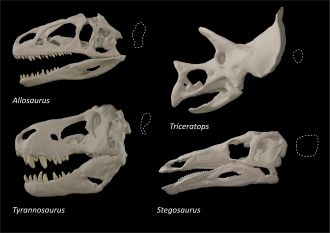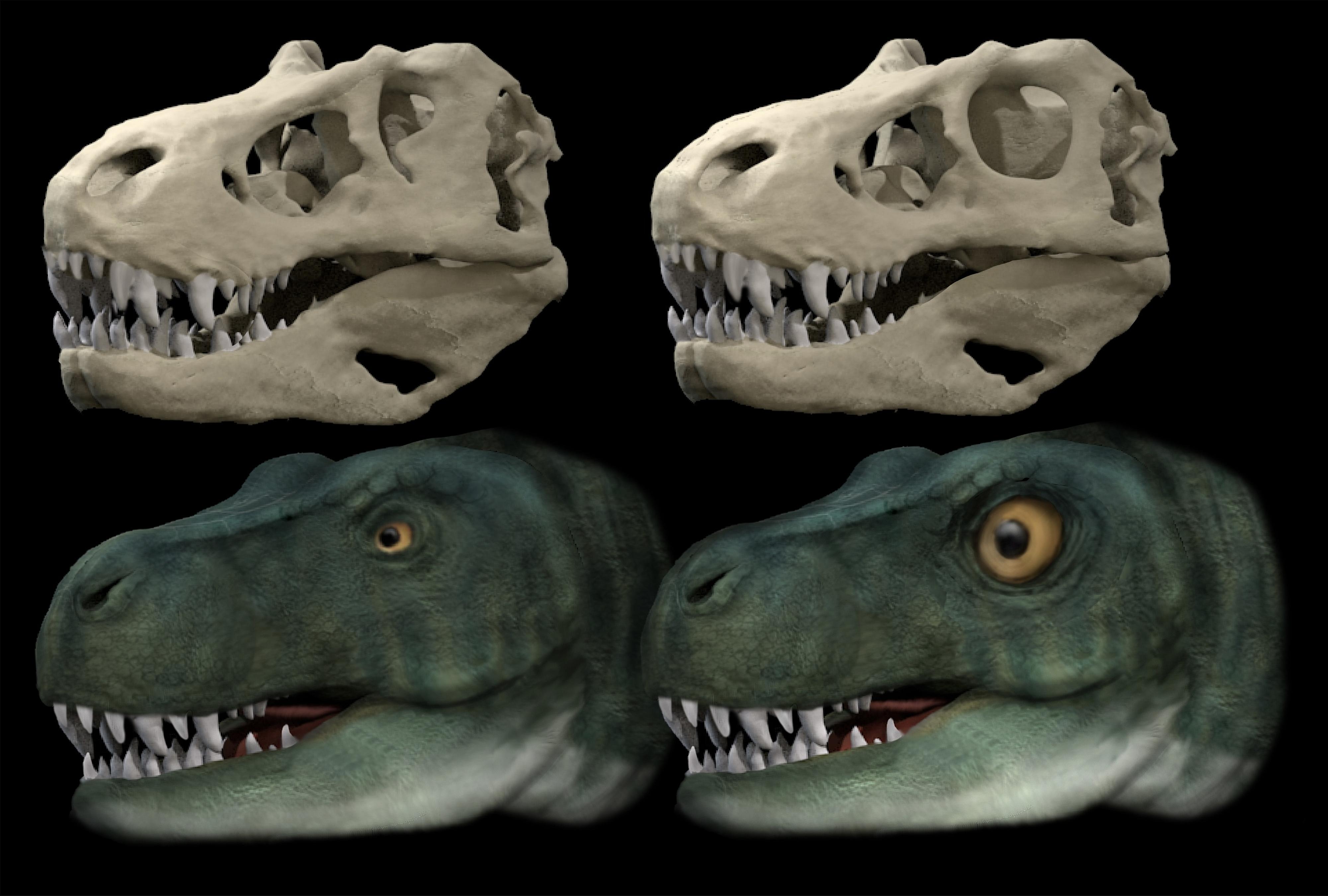Media release
From:
Evolving narrower eye sockets than their ancestors may have helped Tyrannosaurus rex and similar large carnivorous dinosaurs – known as theropods – to bite more powerfully, according to a study published in Communications Biology.
Stephan Lautenschlager compared the eye sockets of 410 fossilised reptile specimens from the Mesozoic period (between 252 and 66 million years ago), including dinosaurs and their close relatives such as crocodiles. He found that most species, particularly herbivores, had circular eye sockets. However, large carnivores with skulls longer than one metre often had elliptical or keyhole-shaped eye sockets as adults, although they tended to have circular sockets as juveniles. More ancient species tended to have more circular eye sockets than more recent species, with large theropods having more keyhole-shaped eye sockets than their ancestors. These observations suggest that larger carnivorous species evolved keyhole-shaped eye sockets over time but that they developed this shape as adults, not juveniles.
To study the impact of eye socket shape on skull structure and function, the author compared the forces that a theoretical model reptile skull with five different eye socket shapes was subjected to during biting simulations. The author also compared the maximum eyeball sizes that could be accommodated by Tyrannosaurus model skulls with either a circular or keyhole shaped socket. Keyhole-shaped eye sockets deformed less during biting compared to circular sockets, and helped to reduce the stress that skulls were subjected to by distributing forces along stronger parts of the skull behind the eye socket. However, the Tyrannosaurus model with a circular eye socket could accommodate an eyeball with a volume seven times larger than the model with the keyhole-shaped socket.
The author suggests that evolving narrower eye sockets may have reduced the space available for eyeballs within theropod skulls while increasing the space available for jaw muscles and enhancing the robustness of their skulls. This may have helped them bite more powerfully at the expense of accommodating larger eyes, which previous research has proposed can improve visual perception. The findings highlight the functional trade-offs that have shaped dinosaur evolution.
Multimedia





 International
International


